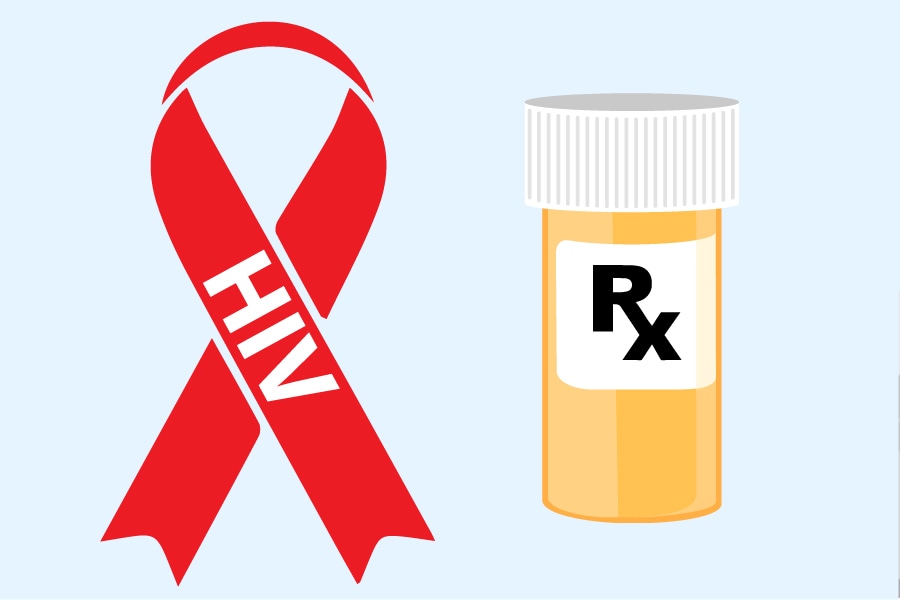C. neoformans Infection Risk & Prevention
Who gets C. neoformans infections?

C. neoformans infections are rare among people who are otherwise healthy. Most cases of C. neoformans infection occur in people who have weakened immune systems 1–3, such as people who:
- Have advanced HIV/AIDS,
- Have had an organ transplant, or
- Are taking corticosteroids, medications to treat rheumatoid arthritis, or other medications that weaken the immune system.
Is C. neoformans infection contagious?
No. The infection can’t spread between people or between people and animals.
Can pets get C. neoformans infections?
Yes. Pets can get C. neoformans infections, but it is very rare, and the infection cannot spread between animals and people. 4–5 If you’re concerned about your pet’s risk of getting a C. neoformans infection, or if you think that your pet has the infection, please talk to a veterinarian.
How can I prevent a C. neoformans infection?
It’s difficult to avoid breathing in C. neoformans because it’s thought to be common in the environment. Most people who breathe in C. neoformans never get sick from it. However, in people who have weakened immune systems, C. neoformans can stay hidden in the body and cause infection later when the immune system becomes too weak to fight it off. This leaves a window of time when the silent infection can be detected and treated early, before symptoms develop (see “Detecting silent cryptococcal infection in people who have HIV/AIDS”).
Detecting silent cryptococcal infections in people who have HIV/AIDS
One approach to prevent cryptococcal meningitis is called “targeted screening.” Research suggests that C. neoformans is able to live in the body undetected, especially when a person’s immune system is weaker than normal. In a targeted screening program, a simple blood test is used to detect cryptococcal antigen (an indicator of cryptococcal infection) in HIV-infected patients before they begin taking antiretroviral treatment (ART). A patient who tests positive for cryptococcal antigen can take fluconazole, an antifungal medication, to fight off the silent fungal infection and prevent it from developing into life-threatening meningitis.
What is CDC doing about C. neoformans?
CDC is assisting areas of the world where the prevalence of cryptococcal infections is high, such as sub-Saharan Africa and Southeast Asia, to prevent deaths from cryptococcal infections by helping implement targeted screening programs to detect early cryptococcal disease in HIV-infected persons. Because many of the countries in these areas of the world often don’t have the resources needed to detect Cryptococcus as the underlying cause of meningitis, CDC is also helping these countries build their laboratory capacity. Early identification of cryptococcal-infected patients in resource-limited settings may lead to more timely treatment, reduced mortality due to cryptococcal meningitis, and overall improved quality of life.
Click here to learn more about what CDC is doing to prevent deaths from cryptococcal meningitis.
- Heitman J, Kozel TR, Kwon-Chung J, Perfect J, Casadevall A, et al. Cryptococcus: from pathogen to model yeast. Washington, DC: ASM Press; 2011.
- Bratton EW, El Husseini N, Chastain CA, Lee MS, Poole C, Sturmer T, et al. Comparison and temporal trends of three groups with cryptococcosis: HIV-infected, solid organ transplant, and HIV-negative/non-transplant. PloS one. 2012;7(8):e43582.
- Perfect JR, Dismukes WE, Dromer F, Goldman DL, Graybill JR, Hamill RJ, et al. Clinical practice guidelines for the management of cryptococcal disease: 2010 update by the Infectious Diseases Society of America. Clin Infect Dis. 2010 Feb 1;50(3):291-322.
- Kerl ME. Update on canine and feline fungal diseases. Vet Clin North Am Small Anim Pract. 2003 Jul;33(4):721-47.
- Trivedi SR, Sykes JE, Cannon MS, Wisner ER, Meyer W, Sturges BK, et al. Clinical features and epidemiology of cryptococcosis in cats and dogs in California: 93 cases (1988-2010). J Am Vet Med Assoc. 2011 Aug 1;239(3):357-69.